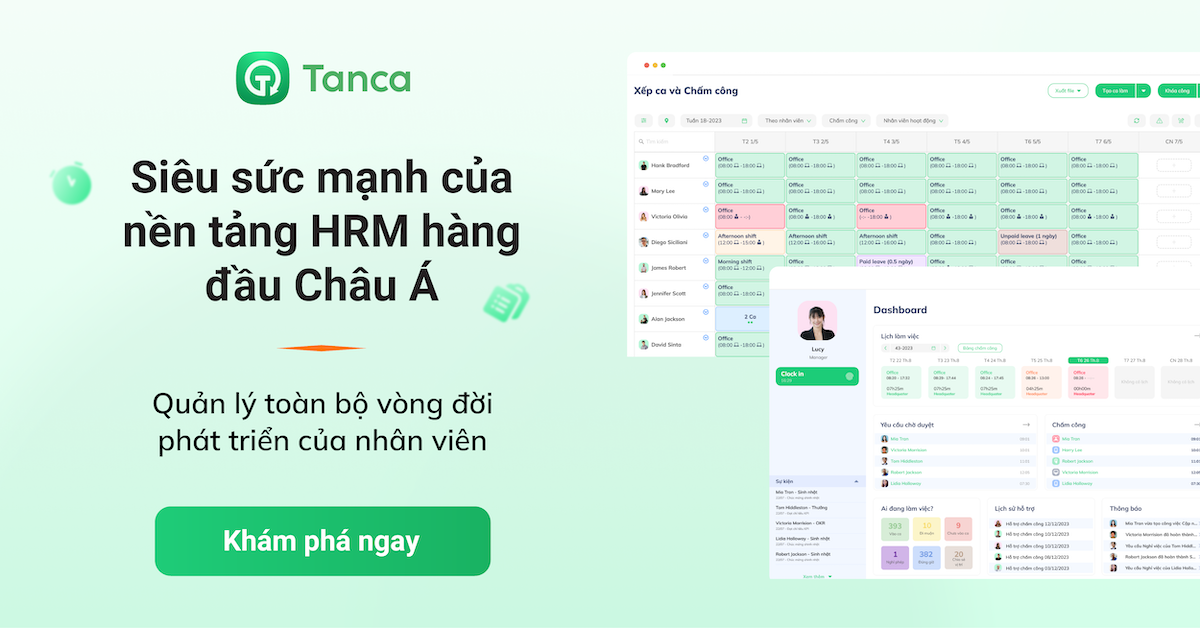There are many benefits of internal recruiting such as saving time, money, streamline your hiring process, foster engagement, and more. In this post, Tanca'll detail 9 common advantages that every HR professional ought to be aware of below.
Let’s start!
Internal Recruiting Overview

A new or newly established position's hiring process can be challenging and stressful.
It takes a lot of work to find, evaluate, interview, and eventually hire a candidate for the position. Even after all of that, the hiring process may still result in a bad fit, forcing you to start over. It takes a lot of time and money, and when you hire a stranger, it might be risky.
On the other side, internal recruitment eliminates much of the guesswork and expense associated with the hiring process.
It will be easier for you to evaluate an internal employee more accurately than a new employee. How does internal hiring operate and what is it? Utilizing internal sources for hiring has some benefits.
It could be time to create an internal recruitment procedure if you've had trouble in the past with standard hiring. Examine the 9 main advantages of this tactic, what internal hiring entails, and how it functions to see if it could assist your company.
Read more: What To Wear To A Job Interview?
What is internal recruiting?

Internal recruiting is the process of hiring somebody from your current staff for a new or empty position.
Here are 4 common types of internal recruiting:
- Promotions
- Transfers
- Employee recommendations
- Promoting temporary employees to full-time roles
Your job will become a lot easier and you'll spend less time filling vacancies if you set up a hiring strategy for internal candidates.
Read more: What Is An Advantage Of Hiring Contingent Workers?
What Is the Process for Internal Recruitment?

You must understand internal hiring in order to do it, and you must have a set procedure for selecting internal candidates.
When it comes to internal hiring, a one-size-fits-all option for job seekers, both internal and external, will not work. Before you begin carefully choosing your next hire, be sure to:
- Decide who will be responsible for posting jobs and recruiting candidates.
- Describe the procedure for posting job openings.
- Make a hiring policy for the company.
- Give specifics about the job description. The best candidates for the role should be obtained, even if you hire internally.
- During the hiring process, maintain track of candidates using an application tracking system.
- Inform workers about available positions. Email, corporate newsletters, internal job boards, or management conversations could all be used for this.
- Candidate evaluation. The same standards should be applied to internal and external candidates.
- By ensuring transparency at all times, you can appropriately promote your personnel.
- Give applicants who were unsuccessful input on what qualifications they would have needed in the future. Avoid sending them a boilerplate rejection letter.
You can locate the best internal candidates for your position and build a standardized process for how to conduct your internal recruiting process if you have a deep understanding of how internal recruiting works. Here are the top 8 advantages of internal hiring to think about.
Read more: What Is The Difference Between Parttime And Fulltime?
Benefits of internal recruiting

Keep the best employees
Making internal promotions sends a very clear message to the rest of your staff. The message sent to them is obvious chances for advancement inside the organization and that their time at work could turn into a career rather than merely a job.
If your greatest employees can clearly see a route for advancement inside the company, you are much more likely to keep them on board.
Saving money
External hiring is well-known for taking a lot of time and being expensive.
According to investopedia, not every new hiring will undergo the same process, but even a $8/hour employee can cost a company roughly $3,500 in direct and indirect turnover expenses.
The elimination of these costs and the expedited hiring process are two of the most evident advantages of internal hiring.
By employing internal recruiting to fill your next role, you can cut hiring costs and the chance that you'll lose the person because they don't match your company's culture.
Finding Internal Candidates Is Simpler
Searching extensively is necessary when hiring externally. It might be laborious and time-consuming to insert lines into the water using various pathways.
You may have to go through dozens, if not hundreds, of applications only to locate a small number of people who might be a good fit. Or even worse, you might not draw any applications and never locate the ideal applicant.
But internal hiring is frequently considerably simpler.
If you'd like, you can quickly announce the open position to the entire firm, letting interested staff members know where to send their applications and resumes. Applications are submitted with a lot less work.
Internal Candidates are more familiar
External job seekers carry a large degree of risk.
Even if they come recommended from trustworthy sources, there is still a possibility that they won't live up to expectations, stay around, or suit the culture.
In small organizations (those with fewer than 500 employees), the average cost of a disastrous hire can reach $11,000, while in large businesses (>1000 employees), it can reach $24,000.
Boost engagement
Promoting from inside conveys that you value and wish to invest in your staff. giving staff members additional chances to grow in their careers or even allowing them to change to other same-level roles that they might find interesting.
Employees who shift roles advance professionally, while others are aware that they can encounter such possibilities in the future. This contributes to the development of a culture of trust that improves employee retention and engagement.
Cuts Down on Hiring Time
A new employee's hiring takes time. In order to identify a few prospective candidates, external recruiting needs hours of posting openings and sifting over several, if not hundreds, of resumes.
Once you've located them, you need to conduct an interview with them, assess them, and make them an employment offer. The hiring of a worker is a time-consuming process that you can only hope will be successful.
The fact that internal applicants are already present in your workplace or company makes finding them simpler and faster.
Because you can easily get in touch with them, receive manager input, and review their employee performance, you can contact them and evaluate them for the role more quickly.
Reduced learning curve
A previous employee at your organization will already be well-versed in the working methods and procedures used there. This ought to imply that the learning curve is much less than it would be for a new employee.
An internal recruit may even be able to use the lessons learned from their former position to your benefit by providing them with critical understandings of how the various parts of your firm work together.
Creating a progressive culture
Companies can promote from within rather than hire outsiders to cover a skills vacuum, helping to create a culture of advancement.
While it might take a team member longer to gather experience, elevating current employees enhances morale and offers every worker something to strive for.
Enhancing connections with team members
It goes without saying that team members must get along and encourage one another in the course of their daily work. The rest of the team will have less disruption, an easier transition period, and a strong support network as a result of their peers already knowing one another.
Read more: Furloughs vs Layoffs - Difference, Advantages & Disadvantages
Frequently Asked Questions

Do companies prefer to hire internally?
Yes, internal hires maintain organizational knowledge and adjust to their new responsibilities faster than outsider hires.
What is an example of internal recruitment?
Send out an email with the job opening attached to it. On your company intranet, keep the Jobs/Careers section current. If your company doesn't have an intranet, post the opportunity on your corporate website.
What is the difference between internal and external recruiting?
A company has two options for hiring: When a company seeks to fill a vacancy among its current employees, this is known as internal recruitment. When a company needs to fill a position, it will look outside the company for any qualified candidates.
Can you recruit internally only?
Yes, and it may be more expedient and economical than sorting through a large number of applications, running a recruitment effort, or using an agency. The staff working are known to the managers. They are conscious of their staffs abilities, experience, and performance.
Wrap up
An essential component of an HR professional's job is hiring, and getting it correctly requires a lot of work.
Even while there will always be a need for some external recruiting, investing the time to create a strong internal recruitment process could pay off in the long term.
Tanca is confident that after understanding the seven advantages of employing internal candidates, you will make a better decision for the forthcoming vacancy.
If you are a HR newbie, take a look in The beginners guide to human resources.
Thank you for taking over our web. See you next time!









